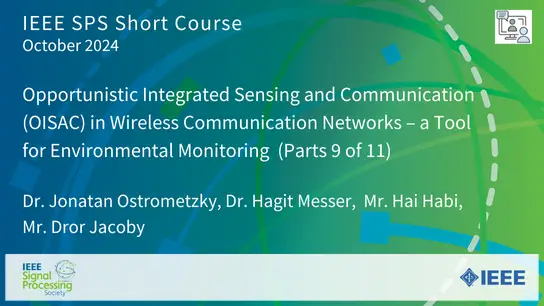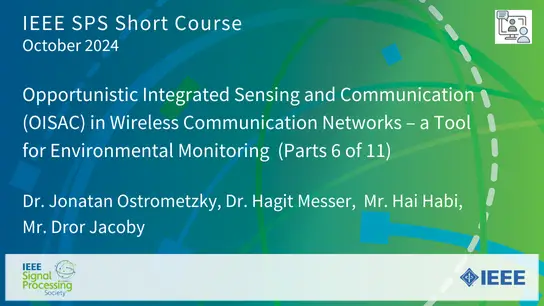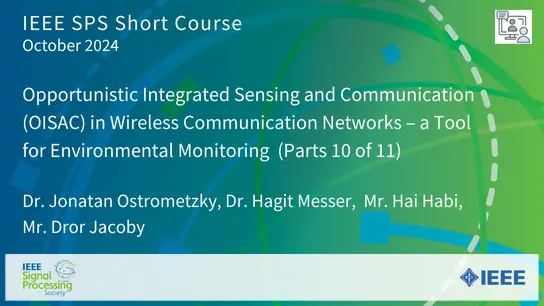Short Course: Opportunistic Integrated Sensing and Communication (OISAC) in Wireless Communication Networks - a Tool for Environmental Monitoring (Part 7 of 11)
Jonatan Ostrometzky, Hagit Messer, Hai Habi, Dror Jacoby
-
Members: $20.00SPS
IEEE Members: $30.00
Non-members: $40.00Length: 0:56:52
20 Nov 2024
The rationale for the short course, including its importance, timeliness, broad usefulness, and how it can possibly introduce new ideas, topics, and tools to the SP community:
The concept of integrated sensing and communication (ISAC) aims at increasing the pareto performance of both functions by designing sensing and communication technologies in an integrated manner. An obvious case where the pareto performance is increased is the case of opportunistic ISAC (OISAC), where the sensing function is added to an existing communication system, or vice versa. In this course we present an overview of the OISAC technology where weather sensing is added to existing wireless communication networks. This opportunistic approach is gaining interest both inside the SP community as well as in nearby fields of research such as earth sciences, as it has been shown to have strong potential to gap the lack in environmental monitoring that is required especially in light of current extreme weather and climate-change local and global effects.
General course scope:
This course is based on 9 units. Combined, they present the field of opportunistic sensing of weather using wireless communication networks, which is gaining attraction as an OISAC tool, used as a novel layer of environmental monitoring scheme. Specifically, the course starts with an introduction to the field, the motivation behind it, and a detailed presentation of the state of the art. Then, we continue with the presentation of the opportunistic sensor’s physical properties, and demonstration of both model- and data- driven approaches for rain estimation using commercial microwave links. We will also have a discussion of the potential to detect and estimate additional environmental phenomena. During the course, the participants will acquire both the basic theory regarding OISAC tools, and will gain hands-on experience of working with algorithms and real-world dataset for the OISAC application of environmental (e.g. rain) detection and estimation.
Course learning goals:
-Introduction to the OISAC paradigm and its importance for sustainability;
- Understanding the importance of environmental monitoring and challenges therein, and the motivation and solution that OISAC of weather proposes to this field;
- Familiarity with the theoretical grounds that are the basic of all OISAC-based tools, performance analysis and estimation approaches for opportunistic sensing;
- Hands-on experience using actual dataset collected by a real-world operational wireless communication network;
- Exposure to a world-wide community dealing with OISAC of weather, both in the SPS community and in meteorological/hydrological research fields.


